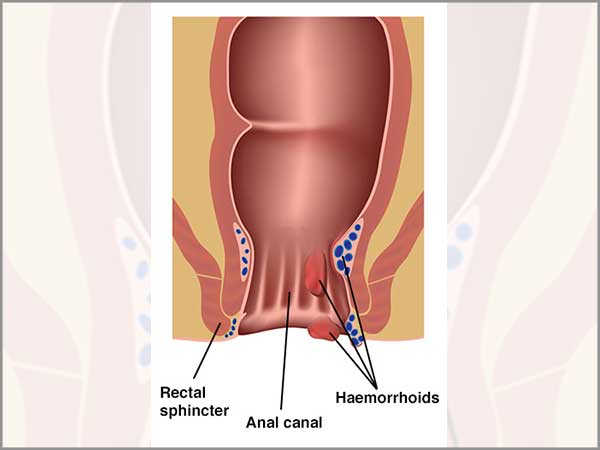Haemorrhoidectomy

Haemorrhoidectomy
Haemorrhoidectomy is a surgical procedure performed to remove haemorrhoids, also known as piles. These are swollen blood vessels located in the rectum or anus, causing discomfort, pain, and bleeding.
Haemorrhoidectomy may be recommended for individuals experiencing symptoms such as:
- Painless bleeding during bowel movements
- Itching, irritation, or discomfort in the anal region
- Swelling or lumps near the anus
- Pain or discomfort during bowel movements
Causes: The development of haemorrhoids is often associated with:
- Straining during bowel movements
- Prolonged sitting on the toilet
- Chronic diarrhea or constipation
- Obesity
- Pregnancy
- Anal intercourse
- Low-fiber diet
Types of Haemorrhoids: Haemorrhoids can manifest in different forms:
- Internal haemorrhoids: Located inside the rectum, they may protrude through the anal opening, causing pain and irritation.
- External haemorrhoids: Found under the skin around the anus, they can itch or bleed when irritated.
- Thrombosed haemorrhoids: Characterized by the formation of a clot in an external haemorrhoid, resulting in severe pain, swelling, and inflammation.
Treatment: Haemorrhoidectomy involves the surgical removal of haemorrhoids. Treatment options include:
- Minimally Invasive Procedures:
- Rubber band ligation: Placing rubber bands around internal haemorrhoids to cut off circulation, causing them to wither and fall off.
- Sclerotherapy: Injection of a chemical solution to shrink haemorrhoid tissue.
- Coagulation: Use of techniques such as laser or infrared light to shrink internal haemorrhoids.
- Open Surgical Procedures:
- Haemorrhoidectomy: Surgical removal of excessive tissue causing bleeding; effective for severe or recurring haemorrhoids.
- Haemorrhoid Stapling: Stapling of the rectal mucosa to reduce blood supply to internal haemorrhoids, reducing the likelihood of prolapse.
- Haemorrhoidal Artery Ligation: Closure of blood vessels supplying haemorrhoids to induce shrinkage.
Risks: Potential risks associated with haemorrhoidectomy include:
- Excessive bleeding
- Difficulty urinating
- Infection
- Loss of rectal sphincter control
- Narrowing or damage to the anal canal
- Difficulty emptying the bladder, leading to urinary tract infections
Post-Procedure Care: After haemorrhoidectomy, patients may be advised to:
- Consume high-fiber foods to prevent constipation
- Use topical treatments to soothe the anal region
- Take warm baths to relieve discomfort
- Keep the anal area clean and dry
- Apply cold packs to reduce swelling
- Take oral pain relievers as prescribed
